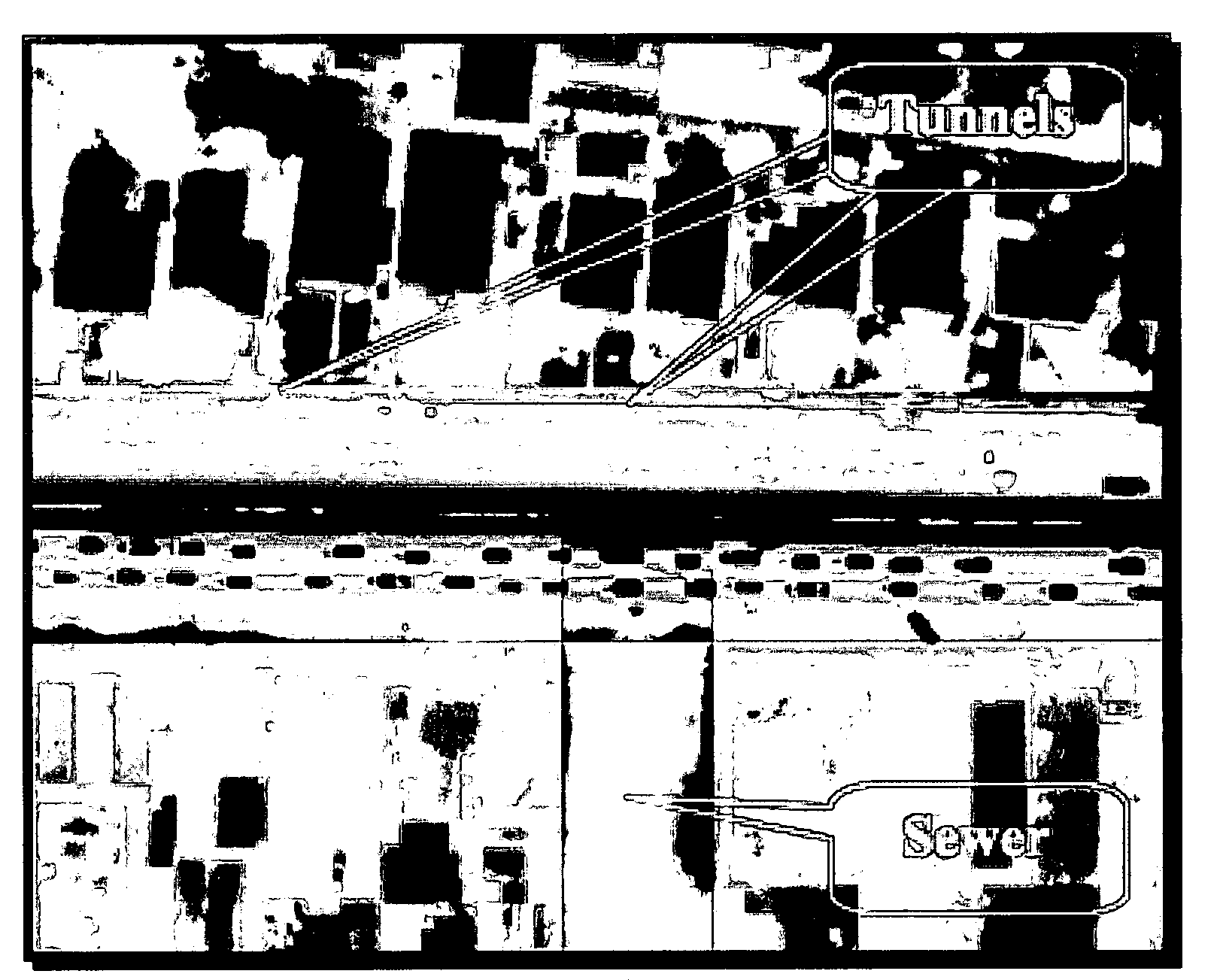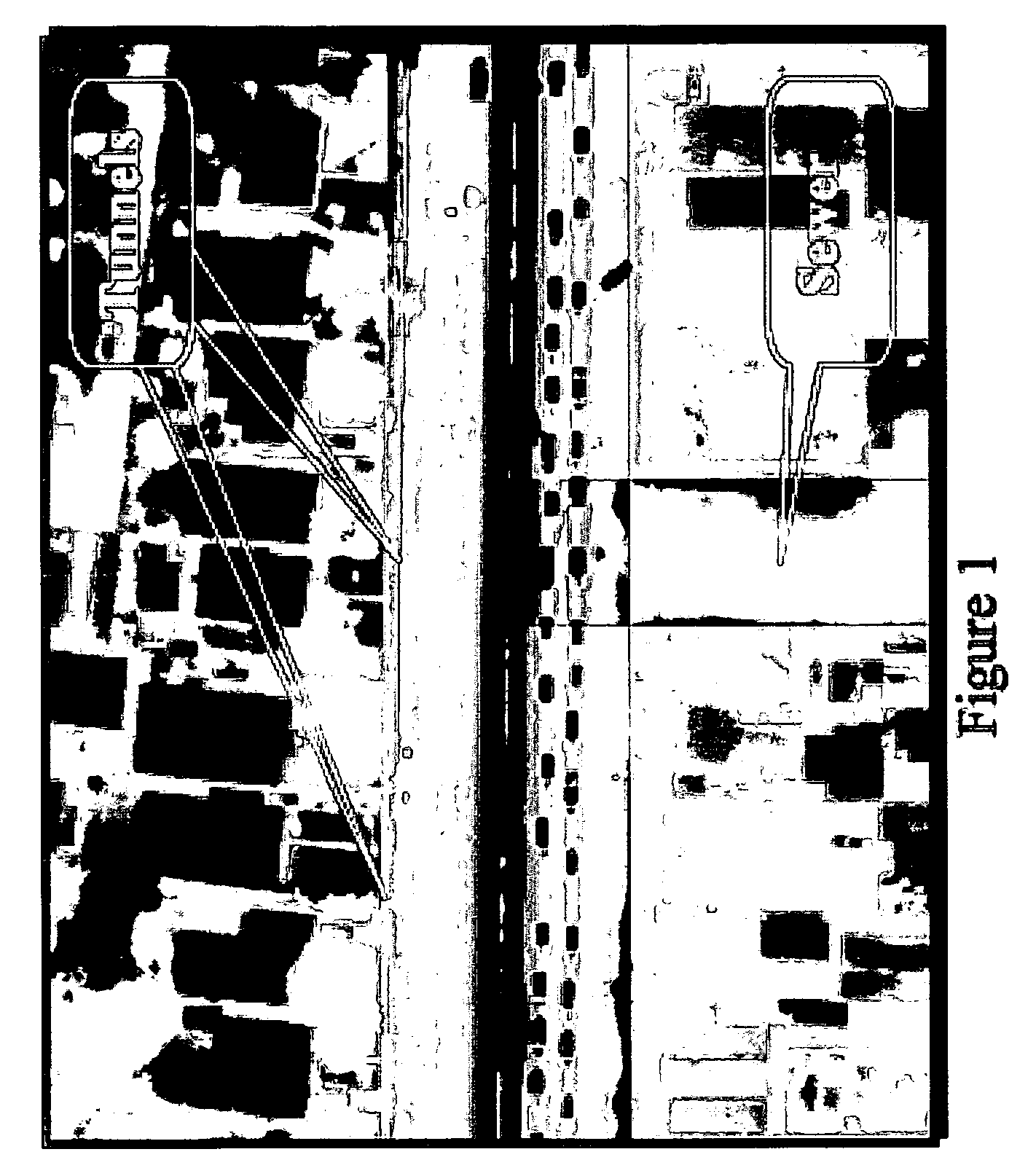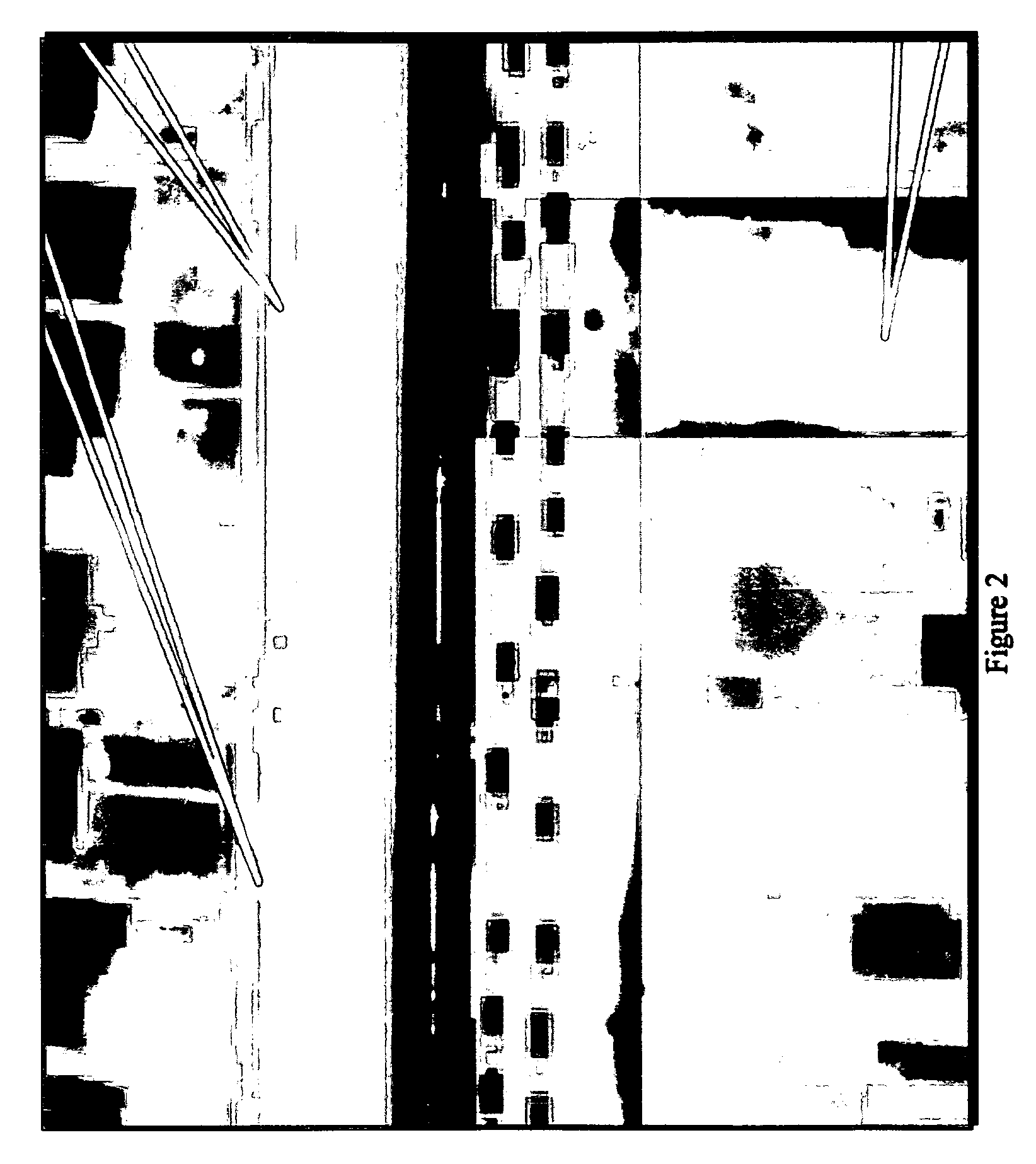Remote sensing of subsurface artifacts by use of visual and thermal imagery
a technology of thermal imagery and subsurface artifacts, applied in the direction of material flaw investigation, optical radiation measurement, instruments, etc., can solve the problems of not having “as-built” engineering drawings or mapping information, and saving enormous money and manpower costs
- Summary
- Abstract
- Description
- Claims
- Application Information
AI Technical Summary
Benefits of technology
Problems solved by technology
Method used
Image
Examples
Embodiment Construction
[0022]Specifically, the new remote sensing, non-invasive system, and its apparatus and methodology, is specifically designed to locate subsurface targets including, but not limited to, tunnels, underground storage tanks (USTs), clandestine storage areas and other underground / subterranean facilities where there may be munitions or material of war or crime, including drugs, weapons, munitions, and such facilities may include large pipes such as sewer, water, chemical, oil and gas, capable of allowing human traffic.
[0023]The inventive system can be configured to be hand carried, mounted on a van or truck, or mounted beneath an aerial platform either manned rotary wing, fixed wing or Unmanned Aerial Vehicle UAV) of any of various types. The various hardware mounting platforms provide users with capability to investigate small, medium and large size areas, both inside buildings and outside buildings, during both daylight and nighttime hours.
[0024]The hardware apparatus of the new system ...
PUM
 Login to View More
Login to View More Abstract
Description
Claims
Application Information
 Login to View More
Login to View More - Generate Ideas
- Intellectual Property
- Life Sciences
- Materials
- Tech Scout
- Unparalleled Data Quality
- Higher Quality Content
- 60% Fewer Hallucinations
Browse by: Latest US Patents, China's latest patents, Technical Efficacy Thesaurus, Application Domain, Technology Topic, Popular Technical Reports.
© 2025 PatSnap. All rights reserved.Legal|Privacy policy|Modern Slavery Act Transparency Statement|Sitemap|About US| Contact US: help@patsnap.com



